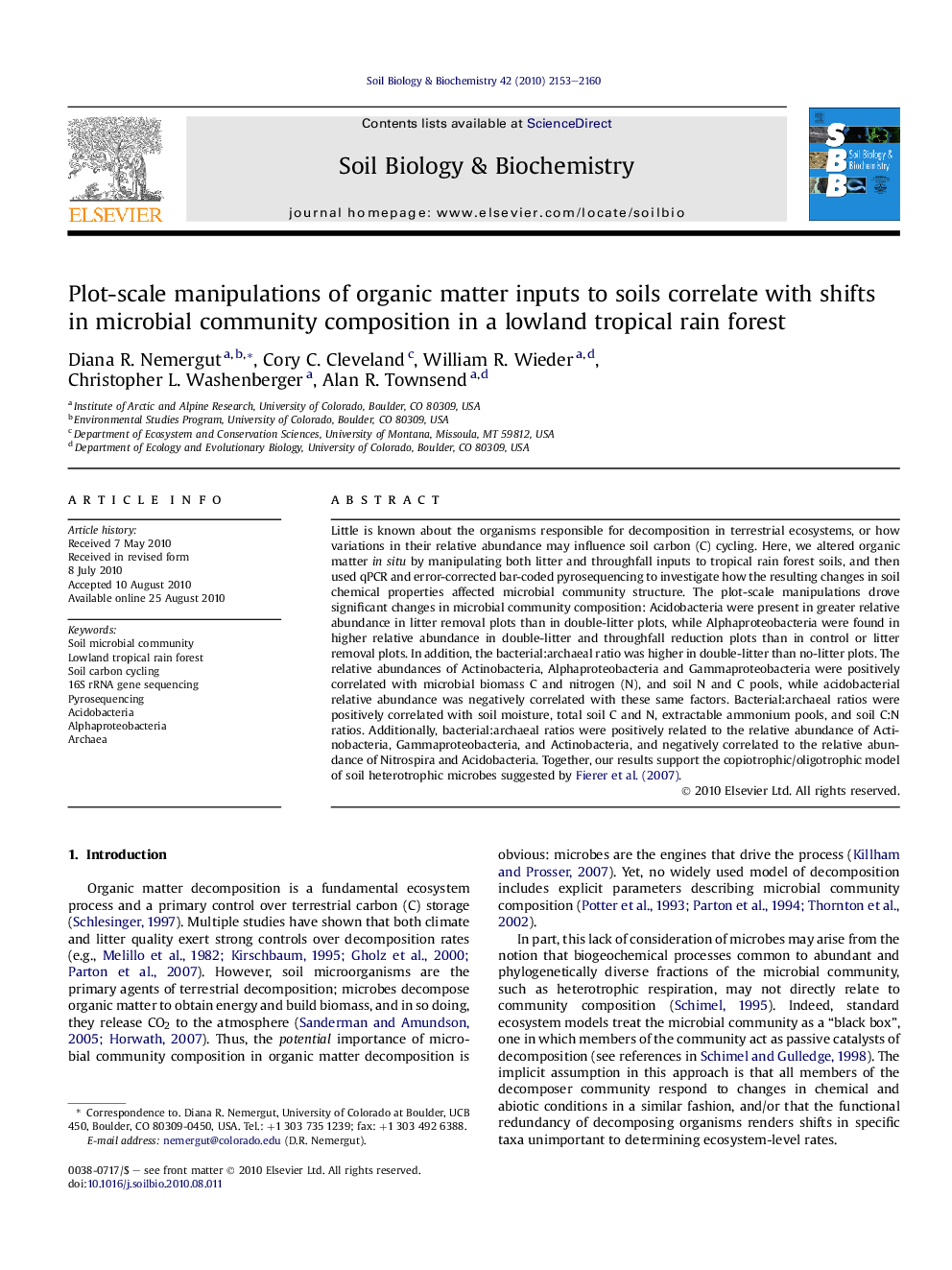| Article ID | Journal | Published Year | Pages | File Type |
|---|---|---|---|---|
| 2025369 | Soil Biology and Biochemistry | 2010 | 8 Pages |
Little is known about the organisms responsible for decomposition in terrestrial ecosystems, or how variations in their relative abundance may influence soil carbon (C) cycling. Here, we altered organic matter in situ by manipulating both litter and throughfall inputs to tropical rain forest soils, and then used qPCR and error-corrected bar-coded pyrosequencing to investigate how the resulting changes in soil chemical properties affected microbial community structure. The plot-scale manipulations drove significant changes in microbial community composition: Acidobacteria were present in greater relative abundance in litter removal plots than in double-litter plots, while Alphaproteobacteria were found in higher relative abundance in double-litter and throughfall reduction plots than in control or litter removal plots. In addition, the bacterial:archaeal ratio was higher in double-litter than no-litter plots. The relative abundances of Actinobacteria, Alphaproteobacteria and Gammaproteobacteria were positively correlated with microbial biomass C and nitrogen (N), and soil N and C pools, while acidobacterial relative abundance was negatively correlated with these same factors. Bacterial:archaeal ratios were positively correlated with soil moisture, total soil C and N, extractable ammonium pools, and soil C:N ratios. Additionally, bacterial:archaeal ratios were positively related to the relative abundance of Actinobacteria, Gammaproteobacteria, and Actinobacteria, and negatively correlated to the relative abundance of Nitrospira and Acidobacteria. Together, our results support the copiotrophic/oligotrophic model of soil heterotrophic microbes suggested by Fierer et al. (2007).
Research highlights► Plot manipulations in litter and precipitation correlate with changes in microbial community composition. ► As soils become more nutrient rich, the Alphaproteobacteria: Acidobacteria ratio increases and bacterial:archaeal ratios increase. ►Bacterial:archaeal ratios positively correlate with C:N ratios, soil C and N and ammonium pools.
